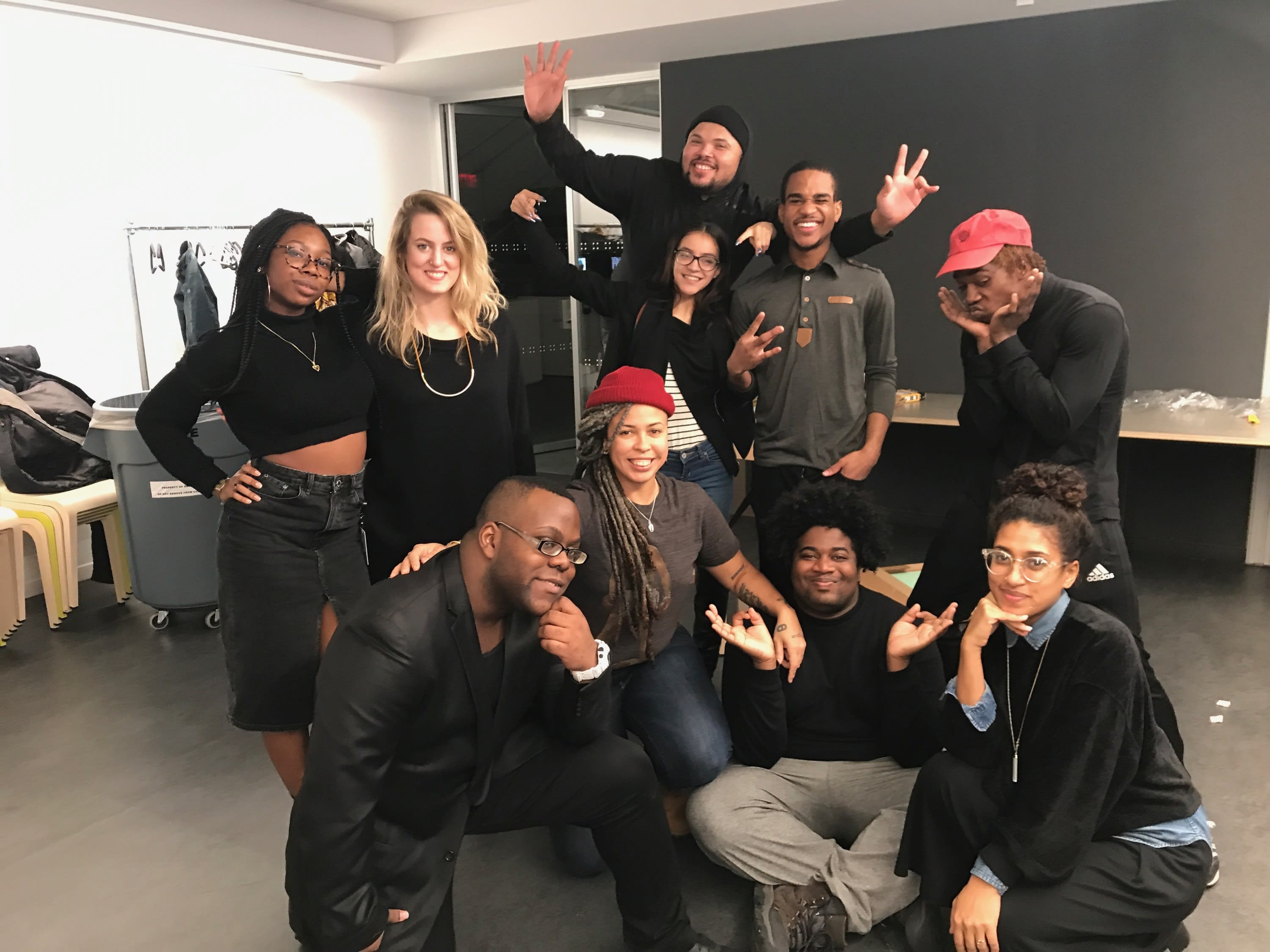
Artist, educator and SVA alumnus Shellyne Rodriguez (center, in red hat) poses with Night Studio students. Photograph by Kaitlyn Stubbs.
Not too long ago, during a model drawing session for The Museum of Modern Art's Night Studio—a program for New York City students working toward their high-school equivalency diplomas—artist, instructor and Night Studio founder Shellyne Rodriguez (BFA 2011 Visual & Critical Studies) was calming a student's distress.The participant didn't have glasses, due to a health insurance issue, and thought she could not complete the activity. “She's crying, she's upset, and she's drawing really small because that's the best that she can see,” Rodriguez says.
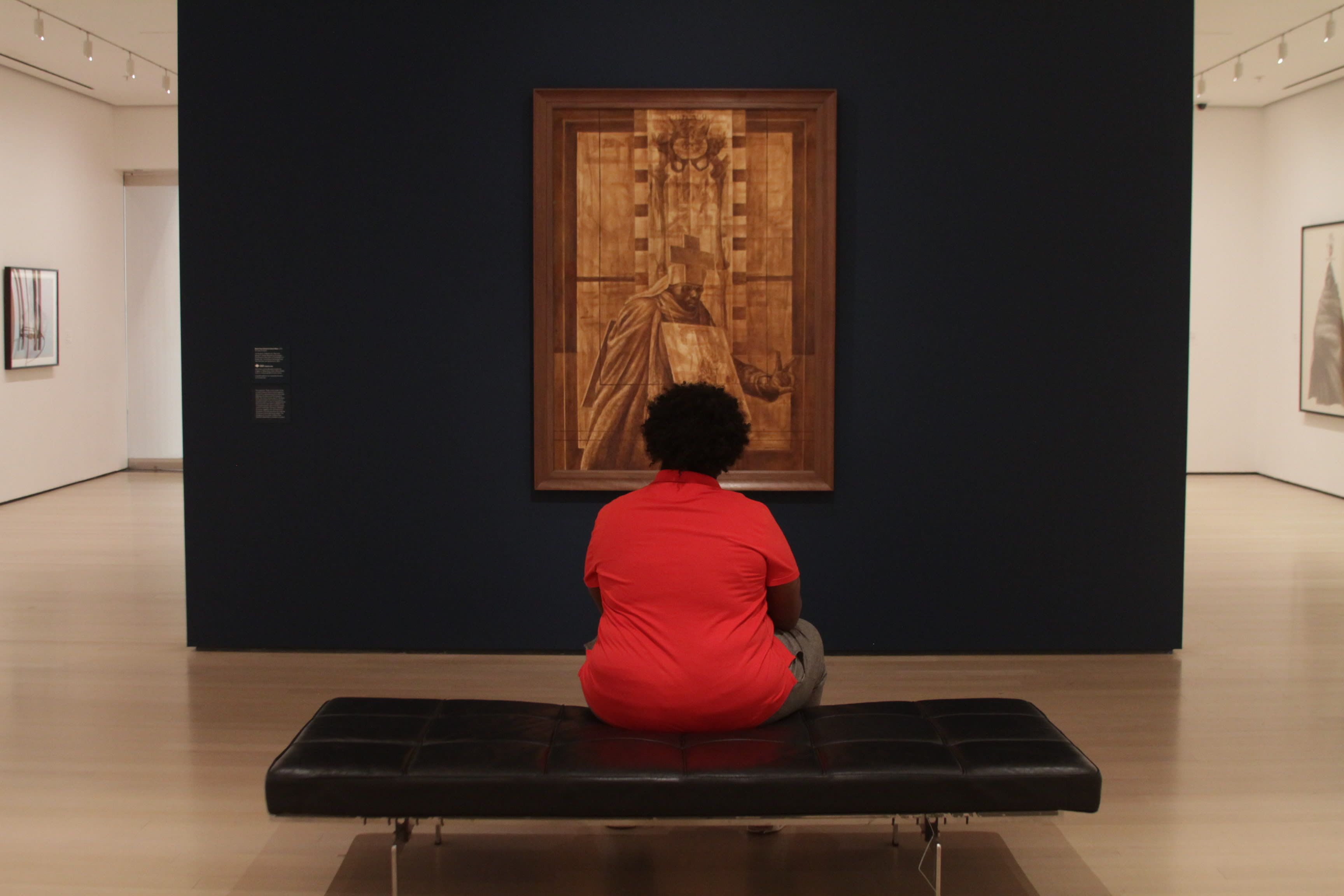
Through the Night Studio program at The Museum of Modern Art, New York, students working toward their high-school equivalency diplomas engage in a variety of art-making practices, including performance, sculpture and drawing. They also have exclusive access to the museum's galleries. Photograph by Kaitlyn Stubbs.
After the lesson, Rodriguez showed her students works by Swiss surrealist Alberto Giacometti, and the group read from James Lord's A Giacometti Portrait (1965), which documents the famous artist's neurotic creative process."I said, 'If we can read about someone who's one of the greats … and learn this person also had self-doubt, then you're in good company.'" Having imperfect vision wasn't a barrier to creating, Rodriguez explained to the class, but an alternate and valid starting point to expression. In other words, she says, "How do we take what you have with you right now and turn that into something?"
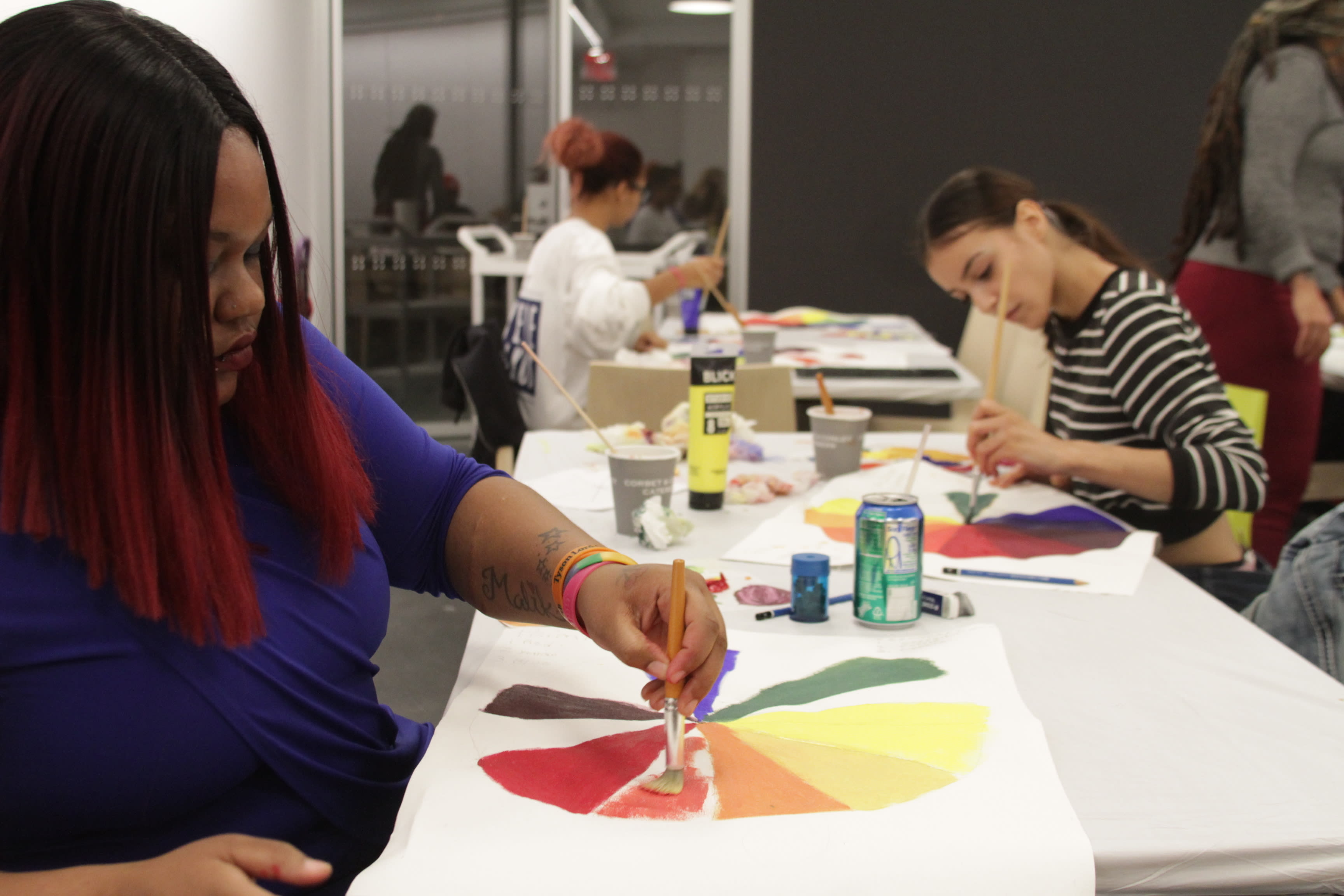
Night Studio students at work. Photograph by Kaitlyn Stubbs.
This is an important ethos for her students, young people of color, who are part of the population underserved by museums. According to a 2018 study by the Mellon Institute, only 12 percent of leadership positions (and 16 percent of curatorial positions) at American museums are held by people of color, and attendance surveys have shown similarly lopsided demographics among museumgoers. Since 2013, in addition to her own art practice, Rodriguez has run community-partnership programming at MoMA in an effort to make the institution more inclusive. Organizations she works with include Passages Academy, a school for students in juvenile detention, and the Ali Forney Center, which serves homeless LGBT youth. With an eye toward bypassing traditional art-world gatekeepers and, she says, "pumping out a bunch of young people who are making art on their own," she developed Night Studio, which launched in 2017.Rodriguez's experiences taught her that traditional paths to a career in the arts—attending a competitive arts high school and prestigious art college and then landing a job at an esteemed museum—aren't equally available to everyone. As an Afro–Puerto Rican teen growing up in the South Bronx in the 1980s, her introduction to art was through graffiti, an element of the burgeoning hip-hop culture around her. "When we say graffiti, it should be thought of in a broad way," she says. "Not just spray painting your name on walls, but also little black sketchbooks and drawing." Her own drawings were colorful, illustrative characters inspired by people in her neighborhood: "Grandmothers, dudes on the block, kids playing at the fire hydrant."

Night Studio classes include studies and practice in performance art. Photograph by Kaitlyn Stubbs.
But when she sought opportunities to further her art education, she came up empty-handed."I didn't get into the High School of Art and Design because my grades were so bad. The high school that I went to sort of shoved me into business [studies]. … I had one art class while I was in high school, for a half-semester, but there wasn't that attempt to shape the education of students individually."Rodriguez dropped out at 19 and earned her GED in 1996. In 1998, with the help of her girlfriend at the time, she enrolled in the evening illustration program at SVA. But the tuition was costly and after two years, she took a 10-year break. During that time she continued painting, drawing and collaging. In 2009 she returned to SVA, graduating with her BFA two years later. In 2014, she received her MFA from Hunter College. She has exhibited and lectured on her work frequently since then, and is currently working on a permanent public sculpture commissioned by New York City, to be installed in the Bronx in 2022.
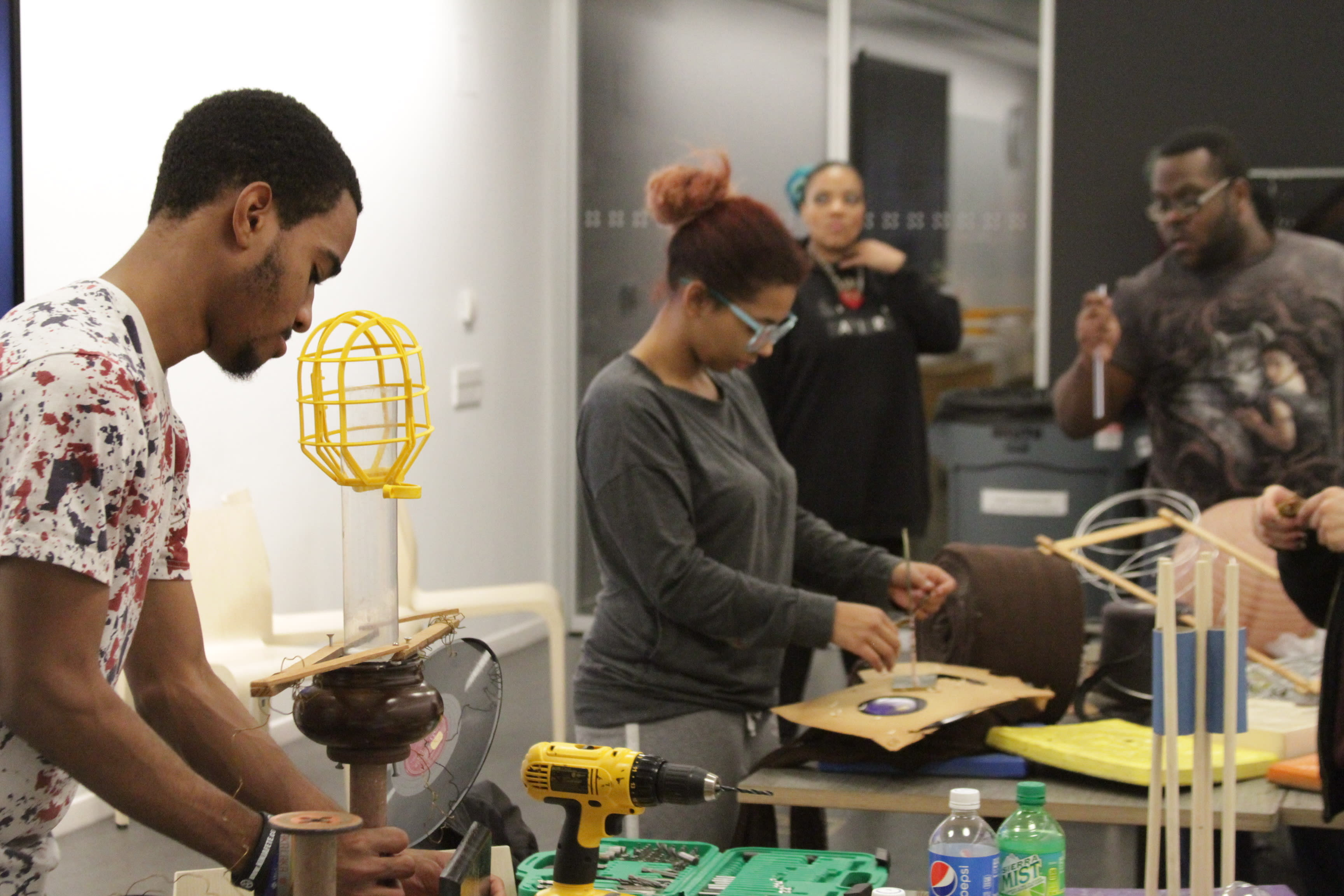
Night Studio students making sculptural works. Photograph by Kaitlyn Stubbs.
Having taken the longer path, Rodriguez now wants to provide an art education for those with a similar background."You're 22 years old. You consider yourself an artist, but you don't have access," she says. "We needed to create a program for these people who are being overlooked."Night Studio takes place over 10 consecutive Wednesday evenings in the fall. The most recent cohort, in fall 2018, comprised eight African American and Caribbean American students, ages 16 to 22, who traveled each week from the Bronx, Brooklyn, Harlem and Staten Island to meet at MoMA's Cullman Education Center, after the museum had closed to the public.
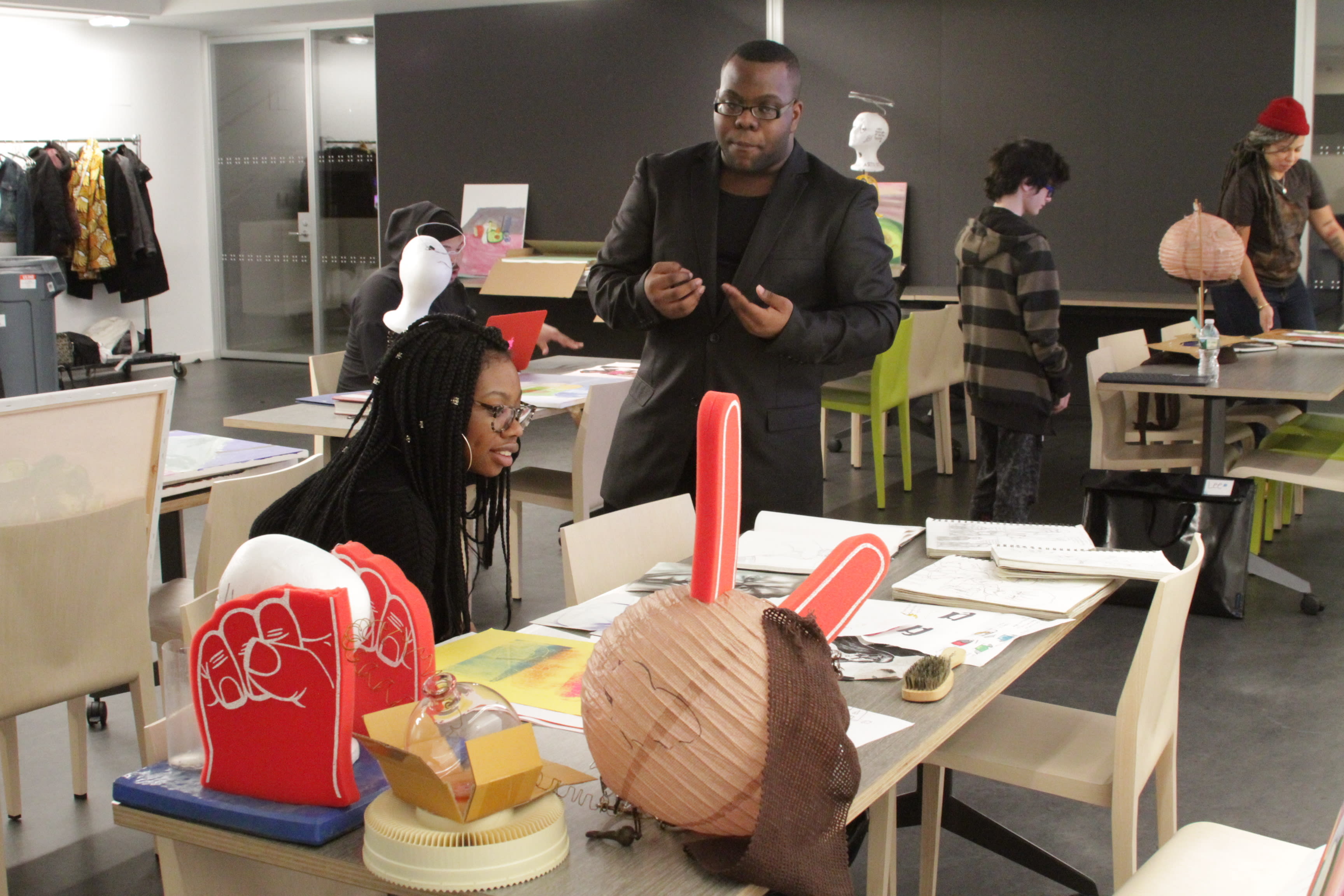
Photograph by Kaitlyn Stubbs.
"We treat it like the first semester of art school," Rodriguez says. Everyone receives a portfolio, a large drawing board, a spiral sketch pad, newsprint paper, a sketchpad for homework and a pouch with an eraser and a pencil.The first 30 minutes of each session consists of dinner and a group-led discussion of topics, such as gentrification and income inequality, affecting their lives and their art. Over the course of the program, the students use the museum's galleries as their classroom and explore a multidisciplinary syllabus: model and still-life drawing, painting, performance art, printmaking and sculpture. They also study color theory, make value scales and write poetry.
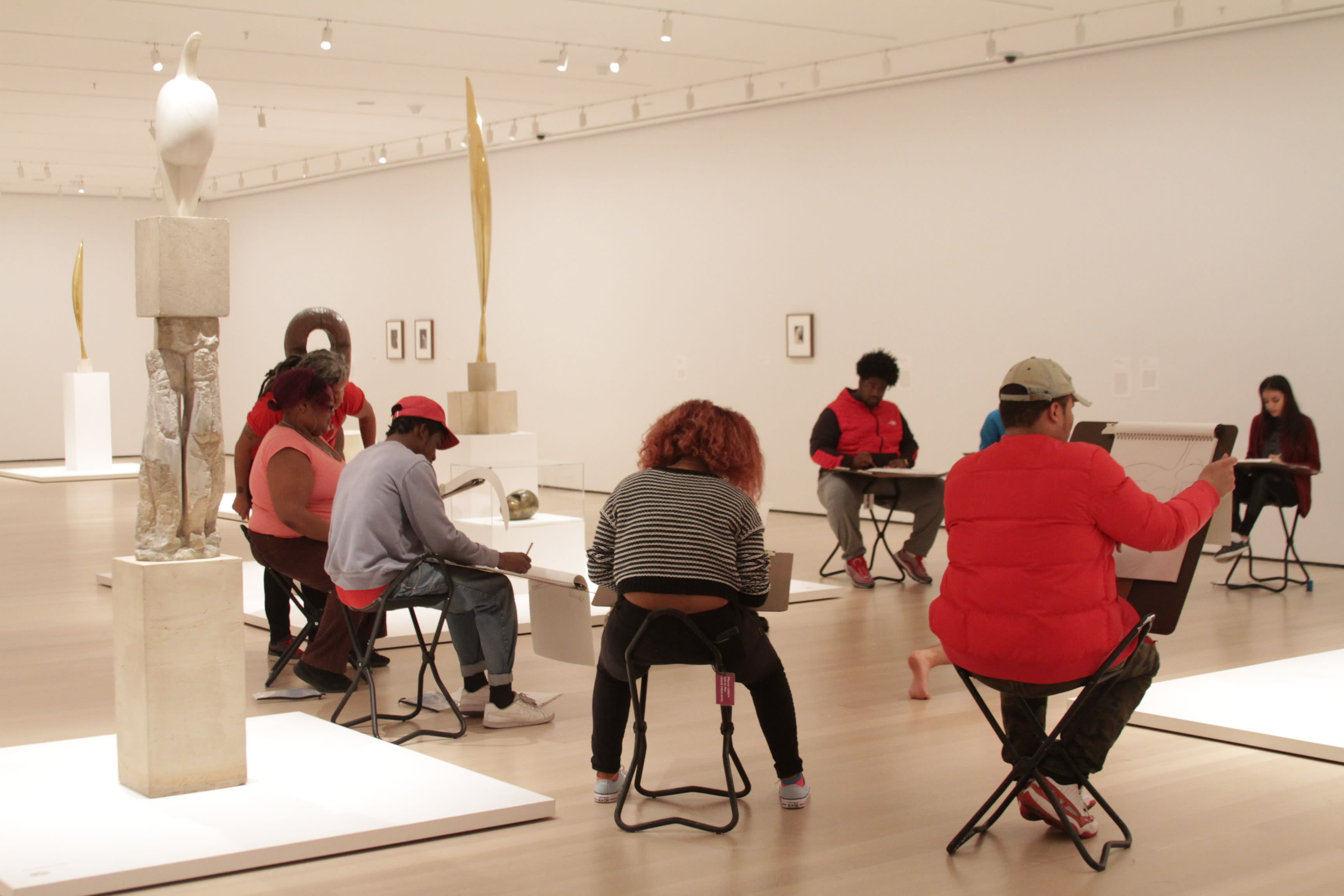
A live-model drawing session with Night Studio students, held in one of the galleries of The Museum of Modern Art, New York. The Night Studio program has after-hours access to the museum's galleries. Photograph by Kaitlyn Stubbs.
One moving moment of the 2018 course, Rodriguez recalls, was when a student invoked mental-health struggles through a performance-art piece. Rodriguez had asked the students to act out their day from 6:00am on. "They're getting up," she says. "They're brushing their teeth. They're improvising. And this kid is on the floor—he's laying, he's still sleeping. And he's scrolling on his phone, he's still in the bed. At one point he gets up, goes to the bathroom, goes back to the bed." In a later conversation, he told her he was depressed."Our lived experiences inevitably show up in the work," Rodriguez says.Rodriguez also invites guest instructors. Past participants include painter Alvaro Barrington, performance artist Zachary Fabri and sculptor Abigail DeVille. Last fall, the final class was a portfolio review led by Shani Peters, a multidisciplinary artist, and Nectar Knuckles, a curatorial fellow at MoMA."The artists and the curators I invite are people of color. Mostly black women, because that's who my crew is, that's who our audience is, and I want us to see us."
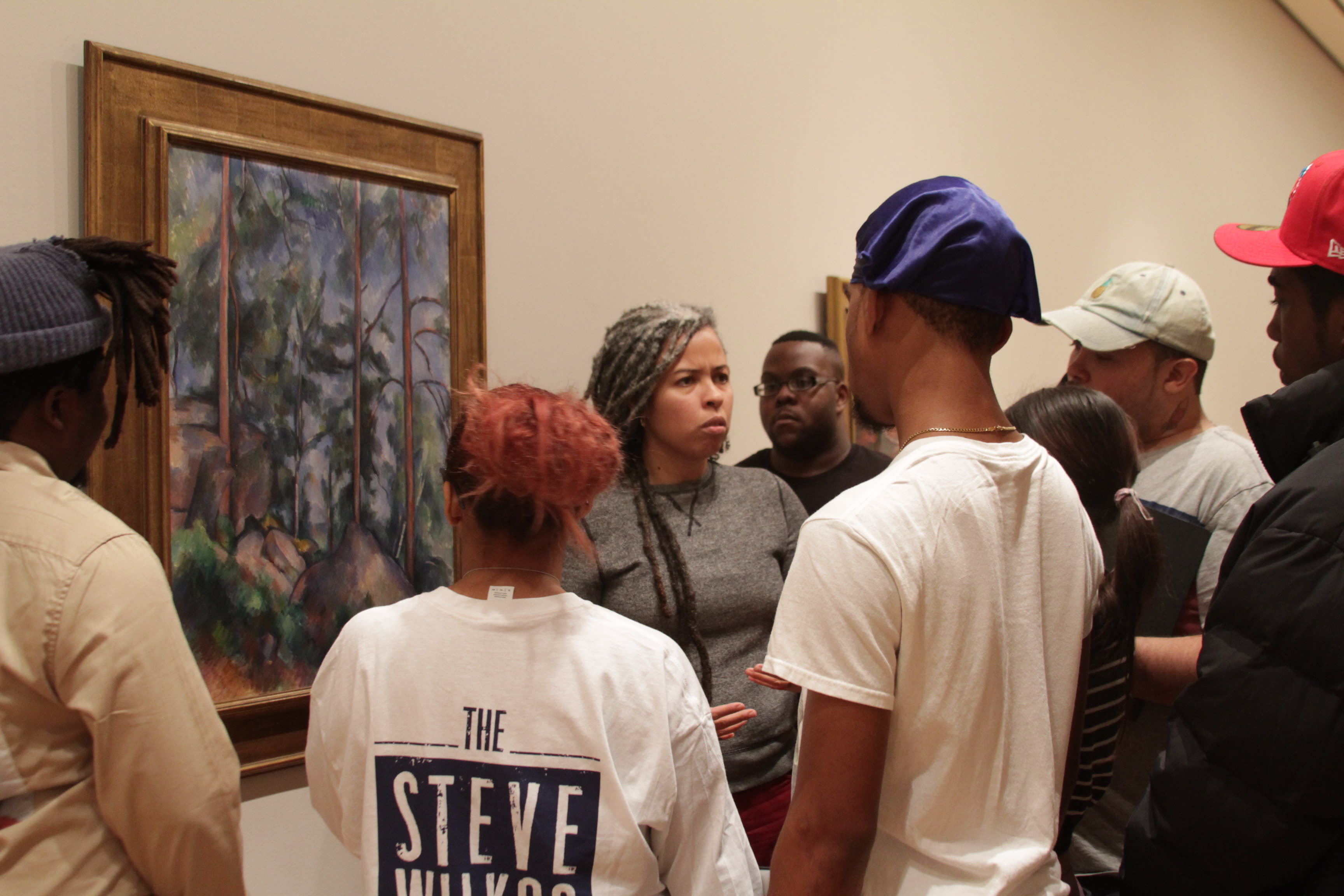
Shellyne Rodriguez leads a group discussion with Night Studio students in one of MoMA's galleries. Photo by Kaitlyn Stubbs.
When MoMA reopens later this month, Night Studio will also open its doors again, welcoming its latest class of young artists. Since its last session, the 2018 cohort has kept in touch and even started an art collective, called H.O.O.D (Hearing Our Obstacles Differentiated)."Whatever grows out of this 10 weeks, plus what you already know, plus what your peers know, plus what you learned on the street, plus what you're not hearing—because what we don't know also teaches us something—that's going to be amazing," Rodriguez says. "That's going to be something."
A version of this article appears in the spring 2019 edition of the Visual Arts Journal.

